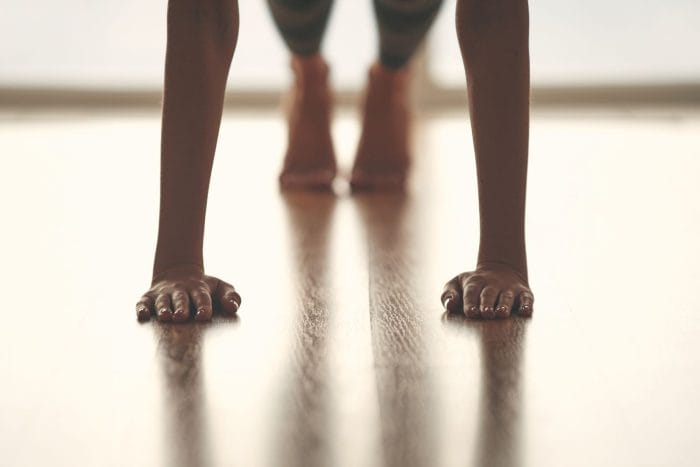
Integrated Movement Training for Peak Performance
Today’s fitness is still dictated by the urge to lose weight or gain muscles and the need to achieve that quickly. So much so that most trainers often neglect to consider their clients as an entity, a sum of systems, not just a sac of bones and muscles.
Exercising, a form of movement, is a human invention. In the early days of humanity, running, swinging, climbing or jumping were a necessity for survival and to get food. It wasn’t about calorie deficit back then! The first signs of structured exercises can be traced back to Ancient Greece where soldiers and Spartans trained to stay fit for fighting. This style of purposeful training led to the idea of sports and competition which, in turn, led to the creation of the first Olympic Games in 776 BC.
The reality is that most people don’t need to train like soldiers, Spartans or elite athletes. We need simplicity, to return to our roots and reconnect with our mind and body so we can move for longevity.
We do see a growing trend in people wanting a more holistic approach to training, and to learn more about their bodies. As a fitness professional, my duty is to incorporate modalities to help my clients connect with their bodies, understand their movements and own their training.
Using Animal Flow as an integrative movement strategy for joints and tissue preparation before exercising can be very powerful. The connection to the ground through the hands and feet allows us to prepare the body for other activities both from a physical and mental point of view.

Diaphragmatic breath for stress regulation
Before we start moving, let’s talk about “breath mobility.” In the Animal Flow practice, we pay a lot of attention to how we breathe while we move, mixing short, long or forced breaths with tempos, while encouraging Flowists to find their rhythm.
One great physiological benefit of breathing while moving is stimulating the diaphragm-pelvic floor complex via the psoas major. This concept was attributed to, and explored by, Gibbons in 2001 and supports the anatomical findings. All three muscle groups share common fibres, which means that how you breathe will affect pelvic stability and how you move, and vice-versa.
If you’ve ever trained while feeling stressed, you may have noticed limitations in your movements. If you train with a coach, they’ve likely noticed this, too. That’s because stress decreases autonomic nervous system regulation, driving it towards a sympathetic state (fight/flight/freeze) and reducing movement capacity (tensed body).
Form Specific Stretches like Beast Reach, Wave Unload or Front Step allow us to move slowly and pay attention to the entire movement and breath. We can move with intention. You may focus on a particular aspect of the movement: lengthening the hips in Front Step, scapular protraction in Beast Reach, spinal segmentation in Wave Unload. All while integrating diaphragmatic breathing.
Connect to Feel
Before starting any session with my clients, I ensure they are “here” with themselves and me. Activations like Static Beast and Crab are a great way to focus on breath and the deep core complex. Once you tune in, you should feel the deep connection in your core. Be mindful of this sensation so you can use it in whatever exercise or activity you take on.
By using some Animal Flow Activations at the start of any training, you can shift your attention to your breathing and what you feel inside. This “sense and representation of signals concerning the internal state of the body” (Cameron, 2001; Sherrington, 1948; Vaitl, 1996) is known as ‘interoception.’
Allow yourself to come to a ‘state of self’, be in the present and prepare for the exercises to come. Connect with the floor, feel the push against your fingers and toes, the scapula gliding on the rib cage, the spine lengthening, and the load change as you shift your weight.
I have greatly benefited from alternating deadlifts or squats with Static Beast as an active recovery. I have my clients imagine they are holding the barbell while in Beast position. This seems to enhance their whole body tension and movement when they return to the deadlift or squat.

Integrate, connect and feel
All forms in the Animal Flow program integrate multiple parts of the body. There is no isolation. Constant load shifts from one limb to another, and energy (or tension) transfers throughout the body.
From a cognitive point of view, connecting the hands and feet to the floor gives your brain constant feedback about where your joints sit in space.
Moving your body around a fixed anchor (the floor, for example) is called a closed-chain movement. The opposite is an open-chain movement, in which we use the body as an anchor and move an object (such as a weight, for example) freely around it.
In their book, Closed Kinetic Chain Exercise: A Comprehensive Guide to Multiple Joint Exercises, authors Todd Ellenbecker and George J. Davies explain that closed-chain exercises:
- offer multiple-joint movements on multiple axes and;
- have a more significant muscular co-contraction in 3 planes of motion which make them more functional overall.
Your shoulder can move to over 16,000 positions (Donatelli, 2012), each separated by just 1 degree. When you consider this, Animal Flow becomes the pinnacle for expressing shoulder strength and stability. All Underswitch variations stimulate the joint placement at a neurological, sensory and physical level. Linear exercises, like shoulder presses or pull-ups, are then much more accessible to perform.
Sequence of Activation
When learning a new exercise like a squat, a jump or a yoga move, we have a checklist of how that movement should happen. This is to prevent injury and create efficiency. A majority of people need a reminder of primary movement pattern sequences.
Primary movement patterns, or ‘primitive reflexes’, are fundamental movements hardwired at birth and controlled by our nervous system to survive. They include gait, squat, hinge, lunge, push, pull, and twist. As we grow, get injured or move less, we sometimes need to be reminded of the proper sequence of these basic movements.
The Animal Flow catalogue offers a variety of forms to reinforce the proper sequence of primary movement patterns.
The Loaded Beast to Beast Unload or Front Step is similar to a fully loaded squat. Focusing on cues such as pushing your toes into the floor, squeezing your buttocks, tilting your hips back and drawing in your belly can be helpful to aid your sequencing.
The same is true for the Crab Reach, which is an excellent set-up for hip thrusts. Create your ‘feet tripods’ by equally connecting your big toes, little toes and heels to the ground. Gently push your knees out and squeeze your glutes hard to lift the hips.
The Scorpion Reach offers one of the best ways to extend and rotate the spine, segmenting the vertebrae and differentiating the rib cage from the hips. It’s a valuable tool for any rotational movement and getting people to understand where rotation can come from.
During my session at the Animal Flow Summit on supination in the Side Kickthrough, I shared how you can help your clients improve thoracic and hip mobility by looking at their foot movement. This movement translates well into gait patterns, squats, deadlifts and balance exercises.
Linking Animal Flow to fitness movement and activities
There are countless ways that Animal Flow movements match well with more traditional exercises and activities. Here are a few examples of some effective pairings for Animal Flow movements and more common exercises and activities.
1. Loaded Beast Unload and overhead squat
2. Front Step and lunge with knee drive and kettlebell press
3. Scorpion Reach and forward/reverse curtsy lunge with trunk rotation
4. Front Step Through and pistol squat
5. Forward Traveling Beast and gait patterning
When we move with intention, coordination and control, we activate the entire brain-body connection. Both brain hemispheres work together to think and move simultaneously (coordination of your opposite limbs in response to the Call Out) while you Flow.
The left hemisphere likes structure. It breaks down information into steps and doesn’t see the ‘big picture.’ The right hemisphere sees the world as a whole, lives in the moment and connects through rhythm and flow. The mid-brain and the neocortex (which makes up about half of your brain tissue) coordinate signals to increase physical and emotional stability (that feel-good moment when you Flow). Finally, the frontal lobes and the brain stem work in balance to increase sensory awareness, focus and motivation.
The Animal Flow practice encompasses many elements of brain-body integration through its system and philosophy. Warming up for physical activities should match the movement goal to avoid injuries. Many people are not mentally present when exercising therefore, bringing attention and focus back to the movement practice is critical. Animal Flow is a fun and challenging way to move and prepare for the physical outcomes of your training. It also encourages you to mentally connect with your body in an automated way when moving.
Try this 30-minute beginner Animal Flow class, led by program creator, Mike Fitch. In this follow-along workout, Mike takes you through some Wrist Mobilizations before teaching you several introductory movements. Learn the movements as individual drills and then build them together into your first Flow.
